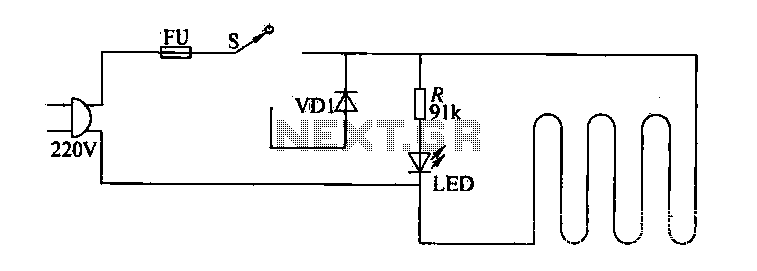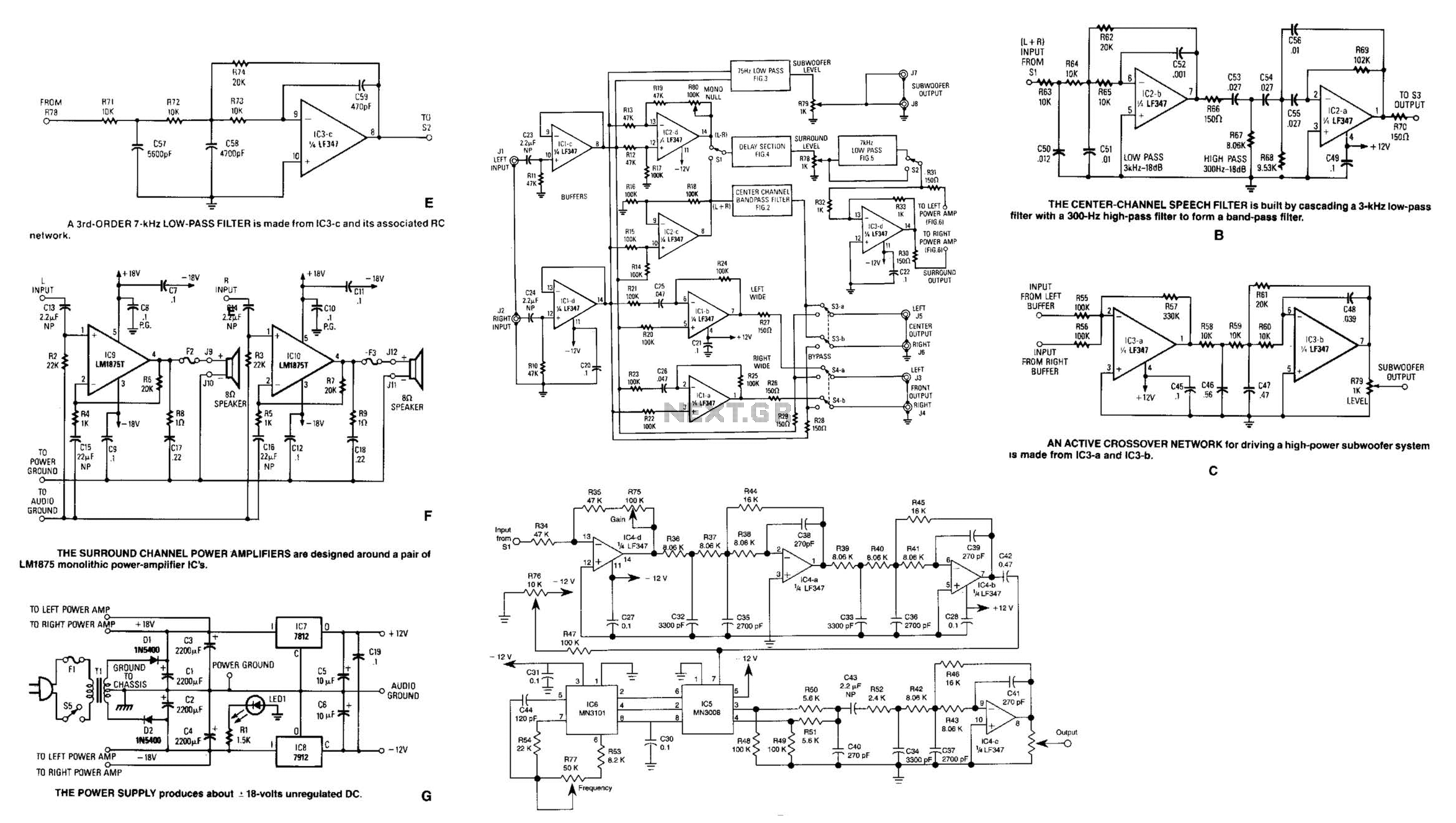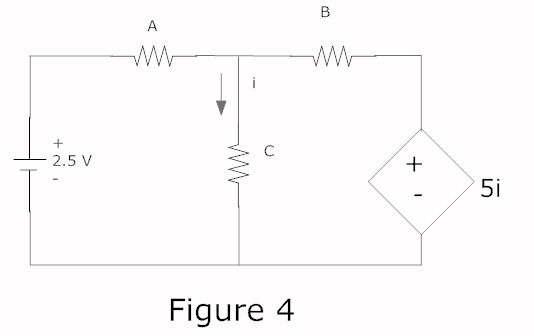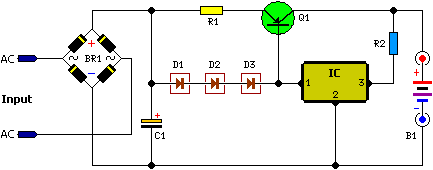
Electric blankets circuit

The circuit of electric blankets is controlled by switch S. When switch S is fully engaged, the entire supply voltage of 220V is applied to the heating wire, resulting in a high-temperature state. When a lower temperature is desired, the switch is turned to the half position. This configuration utilizes a half-wave rectifier diode VD1, which reduces the voltage by half, allowing for a low-temperature state that can be adjusted according to user requirements. The circuit also includes a display to indicate the heating status.
The electric blanket circuit operates by regulating the voltage supplied to the heating element through a simple switch mechanism. The primary switch, designated as S, has two operational states: full and half. In the full position, the switch connects the heating element directly to the mains supply of 220V, enabling maximum heating output. This state is suitable for rapid warming of the blanket to achieve a high-temperature environment.
When a lower temperature is preferred, the switch is toggled to the half position. This action routes the supply voltage through a half-wave rectifier diode, labeled as VD1. The half-wave rectifier allows only one half of the AC waveform to pass, effectively halving the voltage supplied to the heating element. This reduction in voltage results in decreased power to the heating wire, thereby lowering the temperature of the blanket.
The circuit design may also include a status indicator, which visually communicates the current heating state to the user. This feature enhances usability by providing real-time feedback regarding the operation of the electric blanket. The heating element itself is typically composed of resistive wire, which converts electrical energy into heat through the principle of Joule heating.
Overall, the described electric blanket circuit is a straightforward yet effective solution for temperature control, allowing users to customize their comfort level with ease. The integration of a half-wave rectifier and a simple switch mechanism provides a reliable means of adjusting heat output while maintaining user safety and convenience.Electric blankets circuit controlled by the switch S, when the switch S full, 2ZOV entire supply voltage electric wire heating, high temperature state. When the required time t o low temperatures, the switch is turned Lo half, after the Philippine electricity - half-wave rectifier diode VD1, voltage is reduced by half, for the low-temperature state can be the root user. According to their needs .LI;: D heated display status .
The electric blanket circuit operates by regulating the voltage supplied to the heating element through a simple switch mechanism. The primary switch, designated as S, has two operational states: full and half. In the full position, the switch connects the heating element directly to the mains supply of 220V, enabling maximum heating output. This state is suitable for rapid warming of the blanket to achieve a high-temperature environment.
When a lower temperature is preferred, the switch is toggled to the half position. This action routes the supply voltage through a half-wave rectifier diode, labeled as VD1. The half-wave rectifier allows only one half of the AC waveform to pass, effectively halving the voltage supplied to the heating element. This reduction in voltage results in decreased power to the heating wire, thereby lowering the temperature of the blanket.
The circuit design may also include a status indicator, which visually communicates the current heating state to the user. This feature enhances usability by providing real-time feedback regarding the operation of the electric blanket. The heating element itself is typically composed of resistive wire, which converts electrical energy into heat through the principle of Joule heating.
Overall, the described electric blanket circuit is a straightforward yet effective solution for temperature control, allowing users to customize their comfort level with ease. The integration of a half-wave rectifier and a simple switch mechanism provides a reliable means of adjusting heat output while maintaining user safety and convenience.Electric blankets circuit controlled by the switch S, when the switch S full, 2ZOV entire supply voltage electric wire heating, high temperature state. When the required time t o low temperatures, the switch is turned Lo half, after the Philippine electricity - half-wave rectifier diode VD1, voltage is reduced by half, for the low-temperature state can be the root user. According to their needs .LI;: D heated display status .





